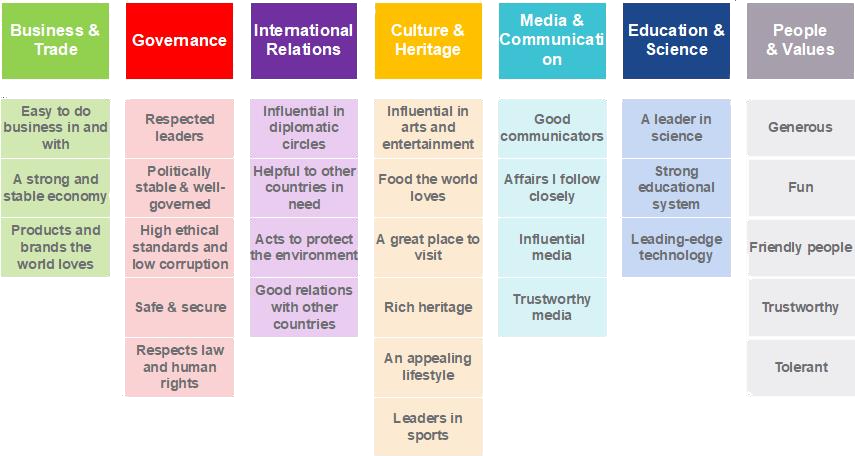Much has been written about how female leaders have managed the pandemic better than their male counterparts, the majority of which is based on anecdotal evidence and opinion. Summations aside, what is worth exploring is the fundamental question of why female leaders seem to be performing better during the crisis and what it says about modern leadership.
“The future is female,” slogan has experienced a rebirth since it first appeared on the scene in 1970s New York, and has recently been picked up by activists, influencers, and political leaders alike. Hillary Clinton declared it in her welcome to the inaugural 2017 Makers Conference and the activist musician Madame Gandhi launched a song with the slogan for its title and has focused on the theme in her music and work. This revival is hardly surprising in an environment reigned by “identity politics.” A simple Google search for “feminine leadership” renders some 33,000,000 results.
A number of studies have evidenced a link between female leadership and financial impact and social preference. For example, the Morgan Stanley Capital Index (MSCI) found that, in the period 2011-2014, companies with three or more women on the board had higher earnings per share and return on equity, compared to companies with zero female directors in the same period. In 2018, the financial services group Nordea proved the link between a larger share of female leaders and lower volatility in returns. And lastly, also in 2018, a study conducted by Berlin Cameron, The Harris Poll, and The Female Quotient, points to a notable change in the workplace with 50% of workers (including 46% of men) in the United States stating that they would prefer to work for a female-led company.
This is telling in the ways we do business are evolving – how we lead and follow, how we work. What is it about female leadership that is gaining traction and what are the unique traits of a feminine leadership style?
In their book, The Athena Doctrine: How Women (and the Men Who Think Like Them) Will Rule the Future, John Gerzema and Michael D’Antonio set out to determine if, “due to the economy, technology, generational influences, globalization and other factors- people in general might be placing more value on the feminine side of human nature.” They surveyed 64,000 people in 13 countries and found that 66% of those surveyed thought that “the world would be a better place if men thought more like women” and 57% of those surveyed are “dissatisfied with the conduct of men in their country.”
Feminine leadership styles strongly correlate to soft power attributes.
Gerzema and D’Antonio asked half their sample to classify 125 different human traits as either masculine, feminine, or neutral. Attributes like “rugged,” “dominant,” “aggressive,” “selfish,” and “hard working” were put into the masculine camp, while “selfless,” “patient,” “sensitive,” “sincere,” “nurturing,” and “trustworthy,” were considered feminine. They then presented the entire list of attributes to the other half of the sample and asked them to order the attributes based on their importance to leadership and success. By comparing the results from both samples, the researchers were able to determine the attributes that made for ideal modern leadership – and whether these were considered either masculine or feminine.
Today, given the current literature and research on gender in the workplace, it might be easy to foresee that the majority of Gerzema and D’Antonio’s best-ranked leadership attributes were feminine traits. At the time the book was published though (2013), the results were eye-opening – even if workers and leaders had been experiencing it for quite some time. Here was the data that showed that the definition of leadership had begun to change, and that masculine traits such as aggression and control – which were once considered the hallmark of strong leadership – were becoming less effective in contrast to feminine attributes such as collaboration and flexibility. The authors conclude in the book that in “a world that’s increasingly social, interdependent and transparent, (…) feminine values are ascendant.”
These feminine values are succeeding in the corporate world. Do they transfer to the world of public diplomacy and geopolitics?
Joseph Nye, the American political scientist and co-founder of the theory of neoliberalism, defined soft power as “the ability to influence the preferences and behaviors of various actors through attraction rather than coercion.” The concept has become increasingly relevant in the 21st century. Brand Finance, where I am Global Managing Director of the education division, released the Global Soft Power Index in February 2020 in an effort to measure a nation’s soft power, its levers and impact on prosperity. The study surveyed 55,000 people in 100 countries, including specialists and the general public, regarding what they considered to be nations’ presence, reputation, and impact on the world stage, based on a variety of attributes which we call the soft power pillars.
Figure 1: Soft Power Pillars
Source: “Global Soft Power Index 2020”, Brand Finance
On average, the female-led nations on the Index – Germany, Switzerland, Belgium, Denmark, Norway, New Zealand, Bangladesh, and Myanmar – have a better reputation and a higher net positive influence than male-led nations. In particular, female-led nations outperform on Governance, International Relations, and Business & Trade. On average, of all the attributes measured by the Index, female-led nations were perceived to be significantly better in relation to three key themes: stability, safety and security, and trust and ethics, specifically:
- Strong and stable economy
- Acts to protect the environment
- Good relations with other countries
- Safe and secure
- Appealing lifestyle
- Politically stable and well-governed
- Trustworthy
- Strong educational system
- High ethical standards, low corruption
In his book Leaders Eat Last, Simon Sinek described how, nowadays, strong leaders are those who make others feel secure. It is no surprise that this concept of security and stability is among the common traits of female leaders during the pandemic, those who lead via clear communication and decisive action. In fact, even prior to the pandemic, most countries led by women outperformed those led by men with respect to protection, stability, and security. If anything, this leadership style has simply continued to flourish amidst the current demand for increased cooperation and multilateralism brought on by the crisis. An increasingly volatile world must be countered with leadership that focuses on cooperation, protection, and safety.
Of course, it is difficult to definitively prove which leadership traits – whether in business or politics – are feminine vs male and which have been the deciding factor in a particular success. The data – in addition to, yes, the anecdotes – highlights an evolution in leadership style, but so much depends on, for example, the length of time those female leaders have been in office and whether their position is a reflection of a more diverse and inclusive society. Nevertheless, “feminine values” do make a positive impact on a geopolitical level. While female leaders are not free of mistakes, feminine leadership styles strongly correlate to soft power attributes and these attributes are what can build positive influence and reputation on both the corporate and geopolitical level.
© IE Insights.







